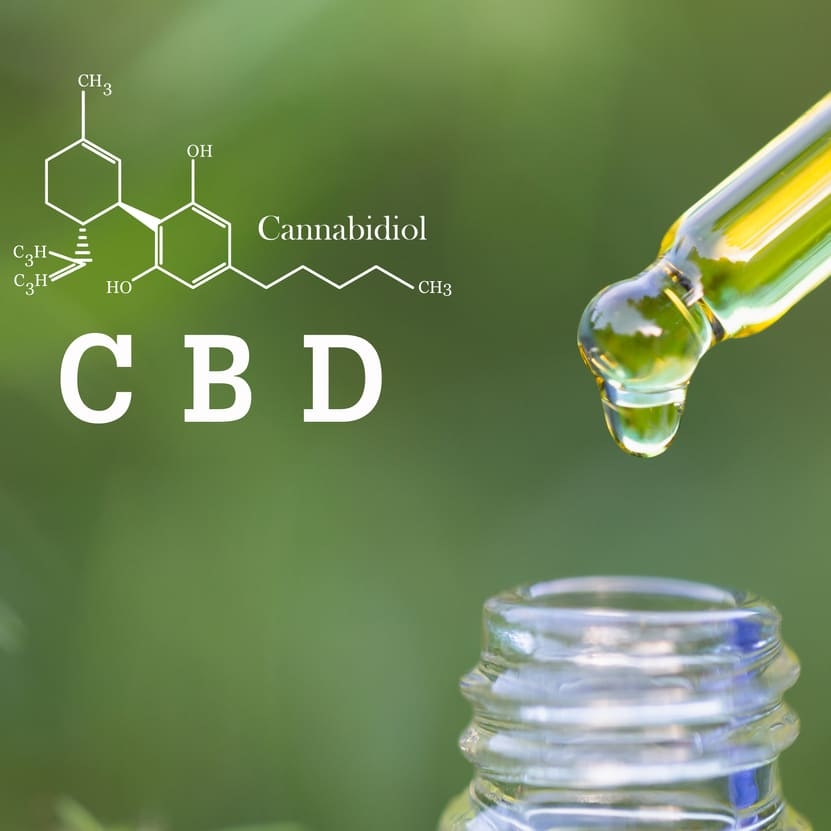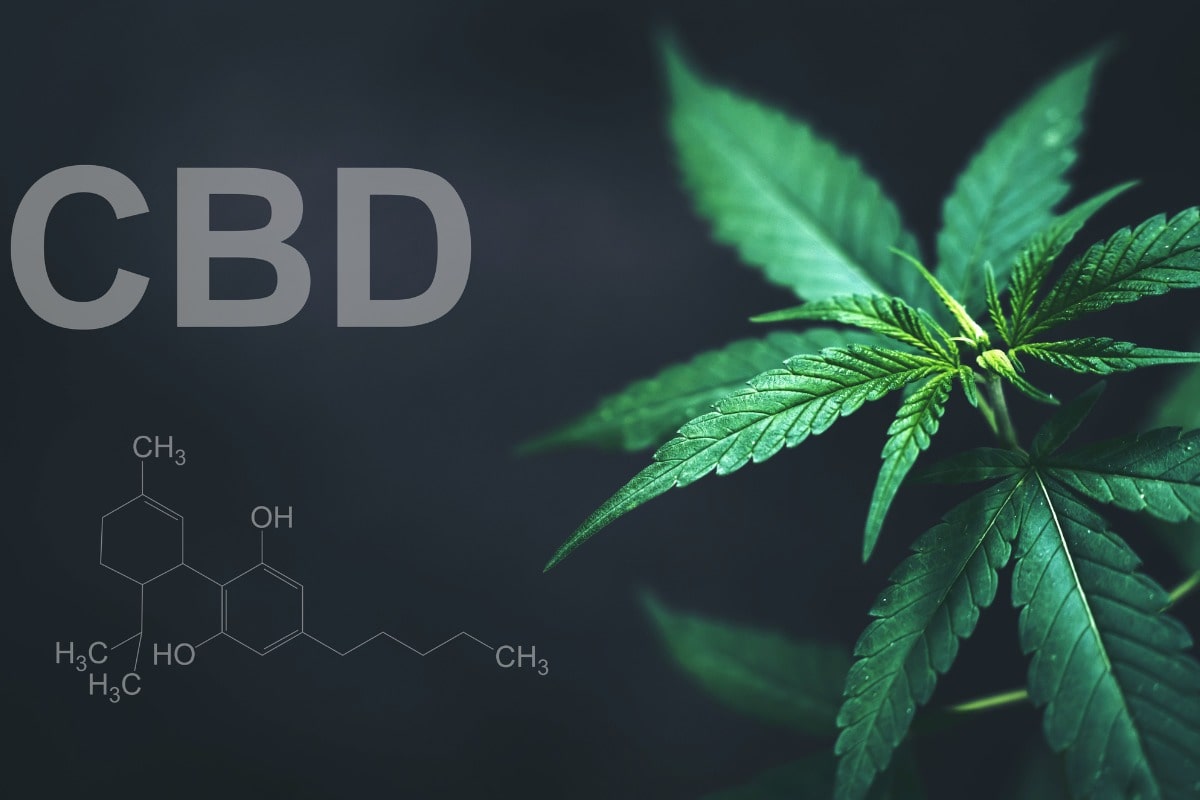Cannabidiol, better known by its abbreviation CBD, is one of the many cannabinoids found in the cannabis plant. Unlike the THC (tetrahydrocannabinol) molecule, CBD has no psychoactive or health effects.
What is CBD?

Cannabidiol, better known by its abbreviation CBD, is one of several cannabinoids found in the cannabis plant. Unlike the THC (tetrahydrocannabinol) molecule, CBD does not provide any psychoactive or health-damaging effects. On the contrary, CBD has many benefits and enormous therapeutic potential for consumers. It is known in particular for its anti-inflammatory, analgesic, anxiolytic and anti-epileptic properties.
Today, everyone has heard of CBD at least once. And for good reason, this molecule presents itself as a very promising natural alternative for relieving a good number of ailments. In this article, we explain in detail what CBD is, how it works, how it is composed and how it is consumed.
How CBD works
The actions of CBD in the brain and body are quite complex. According to several research studies, the beneficial effects of CBD operate through different biological pathways. To date, scientists have not finished their research and there are still some grey areas regarding how CBD works on the body.
On the other hand, we know for sure that CBD interacts directly with the central nervous system and many proteins in the body. Some proteins are in fact components of the endocannabinoid system (ECS). CBD interacts mainly with the CB1 and CB2 receptors of the ECS. In addition, the human body has many receptor proteins involved in the ECS, such as TRPV1 and TRPV2, and GPR3 and GPR6. In a few words, its action on the SEC allows it to act as a regulator for the body.
CBD has other very important roles besides its regulatory action on the SEC. For example, CBD mildly activates one of the predominant brain receptors for serotonin (5-HT1A) in mice, which may explain its beneficial effects on depression and anxiety. CBD also acts on peroxisome proliferator-activated receptors (PPARs) in mice, which may explain its usefulness in combating inflammation.
The components of CBD

CBD content, also known as "potency", is expressed as a percentage of milligrams per gram of cannabis. For example, a product with 12% CBD means it contains 120 milligrams of CBD per gram (mg/g).
It is important to know that as a natural product, the CBD content of a dried cannabis product can vary from product to product and from batch to batch. In addition, all information on the CBD content of the products listed is provided by the federally licensed producers from whom you can purchase your products. Please check all products carefully to be certain of the actual CBD content when you receive them.
Research conducted on CBD
According to Dr Hampton Atkinson, co-director of the CMCR (Center for Medical Cannabis Research) at the University of California, there is a great deal of interest in the possible therapeutic effects of CBD, but there is very little evidence of its effectiveness. However, there is a lot of research that does demonstrate the impact of CBD on the human body and its ability to alleviate certain conditions and many researchers have spoken out on this topic.
Now that CBD is experiencing a research renaissance thanks to legalization efforts, medical science is gaining a much more detailed perspective on this popular and fascinating plant. According to Clinical Trials, a U.S. federal database of accredited clinical trials around the world, about 150 ongoing trials are testing CBD as a treatment for a wide variety of health problems, including autism, alcoholism, skin problems and schizophrenia. For its part, the CMCR is conducting rigorous studies on CBD for its potential to treat schizophrenia and autism.
Some research suggests that CBD can reduce anxiety and self-deprecating thoughts and there is evidence that CBD has anti-psychotic effects in people with schizophrenia. Research that speaks volumes about the huge potential of CBD.
A 2017 clinical trial published in the New England Journal of Medicine found that CBD was highly effective in reducing seizures in people with Dravet syndrome, a rare form of epilepsy. It was as a result of this trial that the US Food and Drug Administration approved Epidiolex, an oral solution of CBD to ease the symptoms of this rare condition.
CBD consumption patterns
CBD by mouth

CBD can be consumed orally in a variety of ways. For example, CBD oil can be incorporated into hot drinks such as herbal tea and in all culinary preparations. Oral consumption of CBD can also be done through edible products such as CBD capsules, cakes or sweets.
When CBD is consumed orally, it passes directly through the digestive system, particularly the liver, long before it enters the bloodstream. In the liver, CBD undergoes the first pass effect and is partially broken down. Oral ingestion will generally take a little longer to feel the relaxing effects compared to other administration methods. However, the effects last longer with this method. The effectiveness of CBD will be determined by the bioavailability of the product.
CBD by sublingual administration
CBD oil can be administered sublingually. To do this, simply pour a few drops of CBD oil under the tongue and wait a few seconds for the mucous membranes to absorb it properly.
Sublingual administration is a simple and effective method of getting CBD into the bloodstream and experiencing effects within minutes. CBD passes through a thin layer of tissue under the tongue and immediately diffuses into the capillaries, bloodstream and cells, resulting in high bioavailability. With this method, the effects come faster and but are not long lasting.
CBD on the skin
Topical CBD products are applied to the skin and do not affect any other part of the human body because CBD and other ingredients do not pass into the bloodstream.
However, topical CBD penetrates the skin's epidermis to produce deeply nourishing effects via the skin's receptors (the skin's SEC). CBD products include creams, lotions and balms that are infused with CBD and can be applied directly to the skin. These products can offer hydrating, anti-aging, anti-inflammatory and antioxidant benefits.
